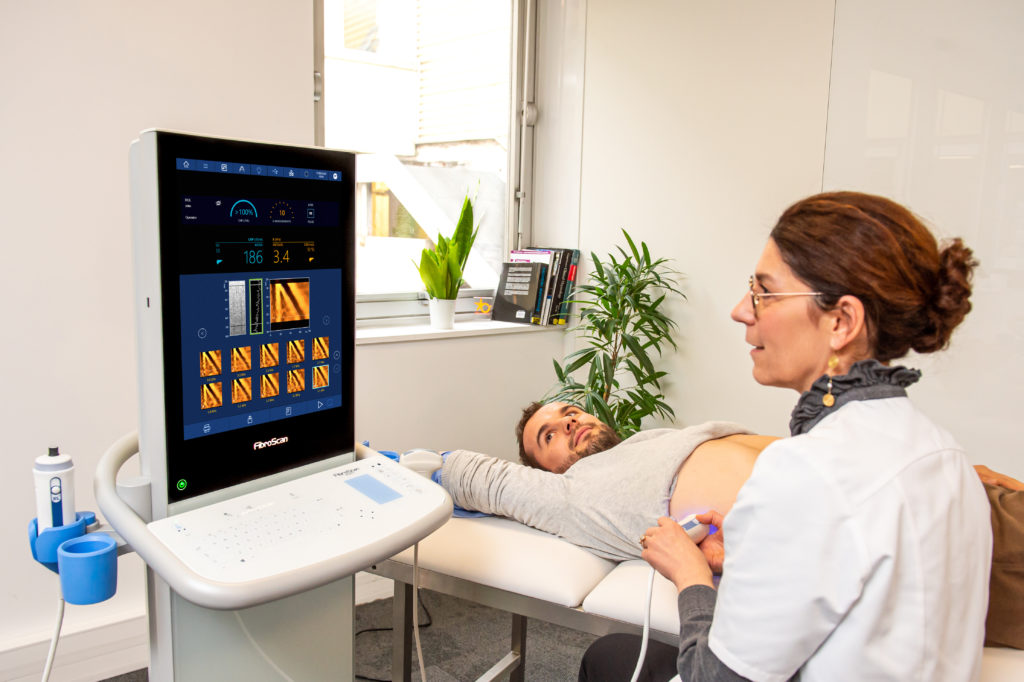April is Alcohol Awareness Month, a time to reflect on our drinking patterns and the role that alcohol plays in our lives. While most adults in the United States drink responsibly and without complications, alcohol-related problems rank among the most significant public health issues in the country.
Alcohol use disorder (AUD) affects about 15 million U.S. adults and an estimated 88,000 people die from alcohol-related causes annually, making alcohol the third leading preventable cause of death in the nation. By 2040, AUD is expected to lead to 8,000 additional deaths from alcohol-related liver disease, 18,700 cases of liver failure, and 1,000 cases of liver cancer.
AUD contributes to fatty liver diseases (FLD), including alcoholic liver disease (ALD) and nonalcoholic fatty liver disease (NAFLD), which is a build-up of extra fat in liver cells caused by lifestyle and dietary choices not related to alcohol. NAFLD and ALD are among the most frequent causes of chronic liver disease in the United States and represent the leading indications for a liver transplant.
Now is a good time to determine if drinking alcohol has become a problem in your life. Excessive drinking is defined as more than one drink per day for women and more than one or two drinks per day for men. A single drinking binge can cause relatively mild damage, although this reverses with abstinence. But if heavy drinking continues, liver damage can progress to several more advanced stages—and may lead to the need for a liver transplant.
Know the Facts About American Drinking Habits
While the liver is capable of regenerating, with alcohol consumption some liver cells die off. Prolonged alcohol misuse over many years can reduce its ability to regenerate, leading to permanent damage.
According to one study, 85.6% of people ages 18 and older reported that they drank alcohol at some point in their lifetime; 69.5% reported that they drank in the past year, and 54.9% reported that they drank in the past month.
At the time of the study, 25.8% of people ages 18 and older reported that they engaged in binge drinking in the past month; and 6.3% reported that they engaged in heavy alcohol use in the past month.
High-intensity drinking, the consumption of alcohol at levels that are two or more times the gender-specific binge drinking thresholds, were 70x more likely to have an alcohol-related emergency department (ED) visit. Those who consumed alcohol at 3x the gender-specific binge thresholds were 93x more likely to have an alcohol-related ED visit. This rising trend is associated with holidays, sporting events, and 21st birthdays.
Alcohol is a factor in the deaths of thousands of people younger than age 21 in the United States each year, including 1,092 from motor vehicle crashes, 1,000 from homicides, 208 from alcohol overdose, falls, burns, and drowning, and 596 from suicides.
What’s more, AUD creates an estimated economic burden of $249 billion every year with more than 15 million adults in the U.S. coping with alcohol use disorder. A U.S. prevalence study estimated that 85.3 million Americans have NAFLD, and 17.3 million have NASH. Combined, these conditions contribute billions of dollars to the country’s healthcare costs.
Closer Look at Liver Disease
NAFLD and mortality are expected to increase in the United States and around the world, raising demand for earlier screening and strategies for relieving the financial burden.
With early diagnosis and lifestyle intervention, liver disease can often be reversed. To achieve this, clinicians should consider adopting medical devices known as non-invasive tests (NITs) to help in the management of patients with liver diseases.
Vibration-controlled transient elastography (LSM by VCTE™), controlled attenuation parameter (CAP™), and spleen stiffness measurement (SSM by VCTE™) have been shown to be the most promising NIT. For example, FibroScan is a quick and painless screening that can be performed in less than 10 minutes to provide immediate results in the physician’s office.
This technology offers a complete non-invasive solution for liver disease management to enhance screening efficiency and software designed to 1) improve reliability in the diagnosis and monitoring of steatosis with continuous CAP, 2) extend usage among severely obese patients with the deeper assessment of liver fibrosis and steatosis and 3) provide task automation features that enable physicians to dedicate more time to patient care.
Liver screening scores can be used to easily detect advanced fibrosis and cirrhosis in NAFLD patients, as well as an app that enables users to assess a patient’s liver health, making the interpretation of results quick and easy. This level of technology is critical for helping clinicians expand capabilities in liver health assessment and to cost-effectively and non-invasively diagnose, monitor, and manage liver health. During Alcohol Awareness Month, we urge everyone to play a role in educating people about the impact of alcoholism on liver health, particularly among young people, and the important role that liver screening can play in reversing the nation’s liver disease epidemic.
Author: Jon Gingrich, CEO, Echosens North America
